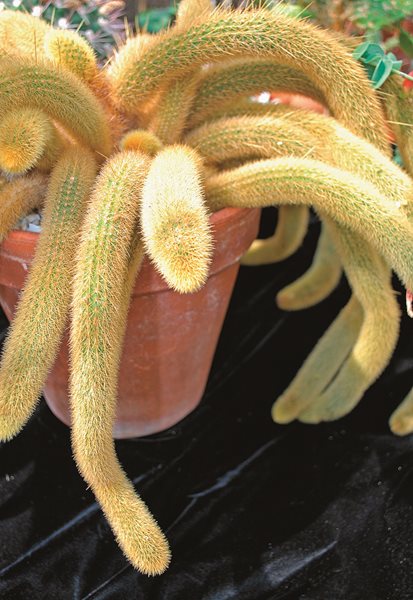4 Strange Plants
From the authors of Bizarre Botanicals, here are some creepy plants to try for Halloween.

Bats
If you're fond of these winged nocturnal creatures, you'll love Tacca chantrieri (bat plant), a tropical plant from Southeast Asia with a sinister inflorescence and black fruits that hang in clusters like roosting bats. If you don’t have the right place for growing this rather large tropical, try Cuphea llavea, (bat-faced cuphea), an annual from Mexico whose red and dark-purple flowers bear an amazing likeness to a bat when viewed head-on.

Spiders
Cleistocactus winteri (tarantula cactus) evokes the spirit of the largest of arachnids. Its fuzzy (and spiny) golden stems growing out of a pot look like golden tarantula spiders emerging from their burrow. A surprising number of succulents “spin” their own webs as well. The easy-to-grow Sempervivum arachnoideum (cobweb houseleek) is festooned in cottony hairs, which look like they have been strung together by a real spider.

Voodoo
Voodoo lilies or corpse flowers don’t just sound ominous; they also look and even smell the part. Sauromatum venosum, Dracunculus vulgaris, and various Amorphophallus species are all members of the arum family and have been called voodoo lilies. They produce large, bizarre “flowers” that emerge directly from the ground and open up to reveal dried blood-colored spathes and briefly-smelly, long, spiky spadixes. These plants seem to have been designed with Halloween in mind, except for one thing—they bloom in the spring. Even so, they are worth planting to appreciate their gothic appeal when the time is right.

Devils
There are no less than 15 plants that include “devil” in their common names. One particularly colorful plant is Solanum pyracanthum (devil’s thorn). This tomato and eggplant relative is both frightening and gorgeous. If you grow it from seed starting in early May, by Halloween it should be 2 feet tall and covered in bright-orange spines. Keep this one out of reach of trick-or-treaters, though. The prickles poke if handled roughly and the plant bears mildly poisonous fruits. This one earns its common name.

Add a creepy plant or two to your Halloween this year and start a new tradition. Many more strange, scary, and fascinating plants can be discovered in the book Bizarre Botanicals: How to Grow String-of-Hearts, Jack-in-the-Pulpit, Panda Ginger, and Other Weird and Wonderful Plants by Larry Mellichamp and Paula Gross (Timber Press, 2010).




